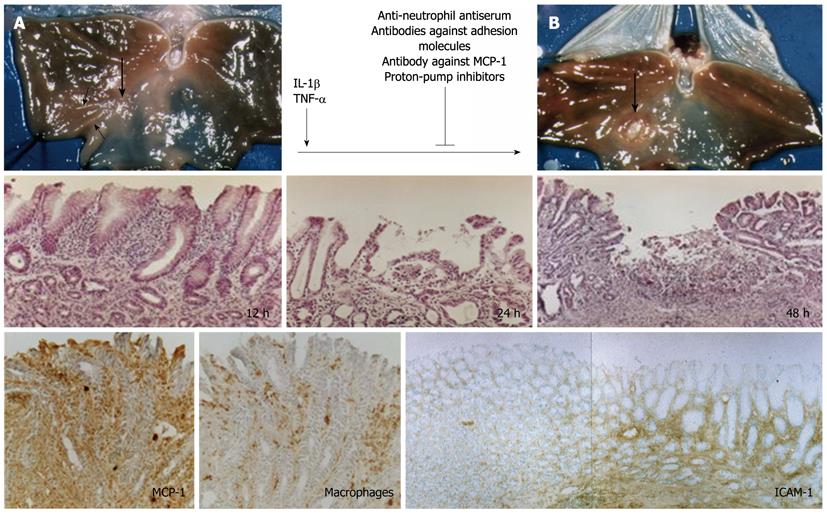Copyright
©2012 Baishideng Publishing Group Co.
World J Gastroenterol. Sep 21, 2012; 18(35): 4811-4822
Published online Sep 21, 2012. doi: 10.3748/wjg.v18.i35.4811
Published online Sep 21, 2012. doi: 10.3748/wjg.v18.i35.4811
Figure 8 Original rat model of gastric ulcer recurrence.
A: Ulcer scar of acetic-acid-induced gastric ulcer healed spontaneously (big arrow) with fold convergence (small arrows); B: Recurrence of ulcer with white coat at the same site as previous ulcer (big arrow). Interleukin-1β (IL-1β) or tumor necrosis factor α (TNF-α) administered systemically causes recurrence of ulcer macroscopically and histologically. Antineutrophil antiserum, antibodies against adhesion molecules, antibody against monocyte chemotactic protein-1 (MCP-1), or proton-pump inhibitors prevent recurrence. MCP-1 is overexpressed in macrophages in the interstitial space of the ulcer scar site at 12 h after administration of IL-1β or TNF-α. Adhesion molecules are overexpressed only at the ulcer scar site (Watanabe et al[22-24]). ICAM: Intercellular adhesion molecule.
- Citation: Arakawa T, Watanabe T, Tanigawa T, Tominaga K, Fujiwara Y, Morimoto K. Quality of ulcer healing in gastrointestinal tract: Its pathophysiology and clinical relevance. World J Gastroenterol 2012; 18(35): 4811-4822
- URL: https://www.wjgnet.com/1007-9327/full/v18/i35/4811.htm
- DOI: https://dx.doi.org/10.3748/wjg.v18.i35.4811









